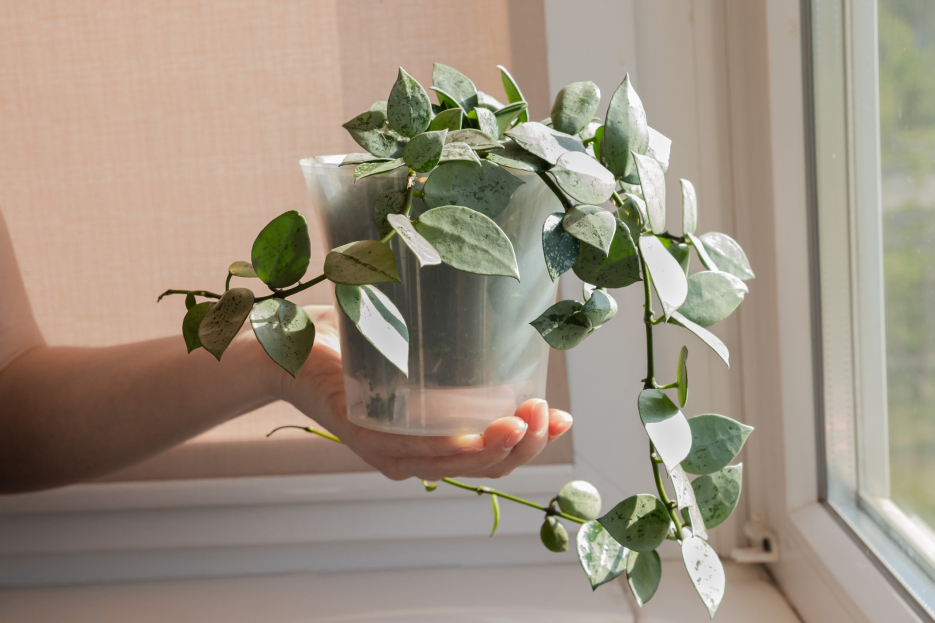
Hoya lacunosa is a charming trailing plant known for its sweet cinnamon-scented blooms and soft, narrow leaves. Native to Southeast Asia, particularly Indonesia and Malaysia, this tropical epiphyte is a member of the wax plant family and is beloved for both its fragrant flowers and its forgiving nature.
Compact and cascading, Hoya lacunosa is perfect for hanging baskets, shelves, or windowsills—and it’s one of the more beginner-friendly Hoyas, too. Here’s how to keep it thriving and (hopefully!) blooming in your care.
Hoya lacunosa thrives in bright, indirect light. A spot near an east- or west-facing window is ideal. It can tolerate a bit of direct morning sun, but harsh afternoon rays may scorch the leaves. In lower light, the plant will still grow, but flower production may be limited.
If growing under grow lights, aim for about 12–14 hours of light per day to encourage blooming.
Like many Hoyas, lacunosa prefers to dry out slightly between waterings. Water thoroughly when the top 1–2 inches of soil feel dry. Avoid letting the plant sit in soggy soil, which can lead to root rot. During the cooler months, reduce watering frequency as the plant's growth naturally slows down.
It’s better to underwater than overwater this plant.
Hoya lacunosa enjoys moderate to high humidity. While it can adapt to average indoor levels (around 40–50%), increasing humidity to 60% or more can encourage faster growth and more blooms. Use a humidifier or place a tray of water and pebbles nearby to boost humidity.
Ideal temperature range: 65–85°F (18–29°C). Protect the plant from drafts and avoid temperatures below 55°F (13°C).
Use a well-draining, airy potting mix—think of what an epiphyte might enjoy. A good blend includes orchid bark, perlite, and a bit of peat or coco coir. This kind of mix mimics its natural growing conditions and keeps roots healthy.
Repot every 2–3 years, or when the plant becomes root-bound. Hoyas like to be slightly snug in their pots, which can even encourage blooming.
Feed your Hoya lacunosa every 4–6 weeks during the growing season (spring through early fall) with a balanced liquid houseplant fertilizer diluted to half strength. Alternatively, a bloom-boosting fertilizer high in phosphorus can be used to encourage flowering.
Skip fertilizing in the winter when the plant slows down.
The real charm of Hoya lacunosa lies in its adorable star-shaped white flowers, which emit a strong, sweet, cinnamon-like fragrance, especially in the evening. Each flower cluster (umbel) lasts about a week.
To encourage blooming:
Minimal pruning is needed. Trim leggy vines to encourage bushier growth or to shape the plant. Always use clean, sharp scissors. You can also wipe the leaves occasionally with a damp cloth to keep them free of dust.
Hoya lacunosa is easy to propagate via stem cuttings. Choose a vine with at least one or two nodes and a few leaves. Place the cutting in water, moist sphagnum moss, or a well-draining soil mix until roots form—usually within a few weeks.
Propagation is best done in spring or summer.
Good news—Hoya lacunosa is non-toxic to pets! Still, it’s best to keep it out of reach to prevent any potential chewing or damage to the vines.